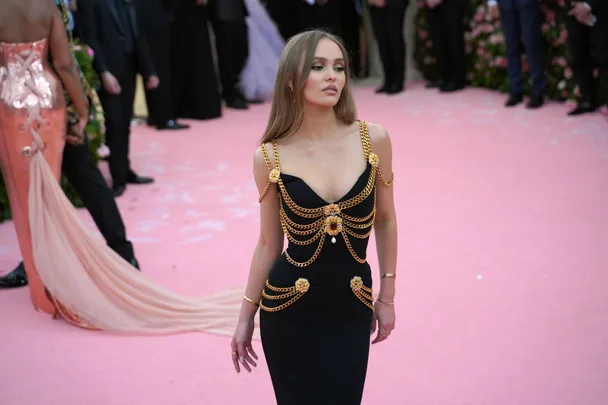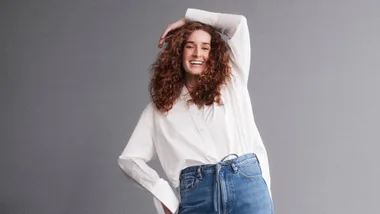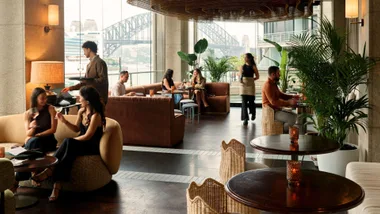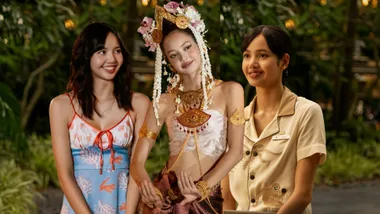Dazzling archival fashion and sustainable, circular resale platforms are changing the way we shop for the better. The devil, it would seem, rewears Prada.
It’s 3am on a Monday when I’m woken by a sharp ping on my phone. “A seller has made you an offer” flashes a notification, as an original Dior Saddle bag appears on my screen. It’s the kidney-shaped cult purse of the new millennium, a relic of fashion history designed under John Galliano and slung by the likes of Sienna Miller and Carrie Bradshaw in the early aughts.
And today, a vintage reseller – Nicolo in Italy, no less – wants to sell me one for $875 (a modern re-issue of the design would set me back $5500).
In a Covid-induced fog, where television sends me dizzy and books strain my brain, the Vestiaire Collective shopping app has become my happy place.
It’s a digital market for preloved luxury fashion, and I’ve spent hours searching and swiping, hunting down wearable treasures and iconic accessories of yesteryear: Phoebe Philo-era Celine, lust-have Alaïa dresses and hot-right-now ’90s Fendi.
Recycled style has been on the rise for a few years now, a response to the devastating impact of overconsumption on the planet and a growing antipathy for fast fashion. Research by e-tailer Farfetch shows that purchasing a pre-owned piece of clothing as opposed to a new item can save 1kg of waste, 3040 litres of water and 22kg of carbon dioxide, so – against a backdrop of floods, fires and news that the world’s textile waste could fill Sydney Harbour annually – it’s not surprising that a sustainable shift is afoot.
“The resale market is growing 20 times faster than the fashion industry overall,” affirms Fanny Moizant, president and co-founder of Vestiaire Collective.
She created the business out of her Parisian apartment in 2009 to help her fashionable friends cleanse their closets, and it’s since flourished into a powerhouse platform used by 15 million buyers and sellers worldwide.
“It’s a treasure trove,” says Moizant proudly, adding that the site encompasses both vintage fashion (by definition, pieces produced more than 20 years ago) and modern must-haves.
“Day to day, the pieces that sell the quickest are the Gucci Jackie Bag, Prada Tessuto and Louis Vuitton Pochette accessories. Right now we’re seeing Y2K references – bling, cut-outs, fringing, baggy pants – and we’re predicting that metallic, clogs, kitten heels and oversized chain jewellery will be hot sellers next.”

Indeed the vintage boom is not only driven by our eco conscience, but a renaissance of glamour, too. Fashion works in 20-year cycles, so the revival of sparkle, sex appeal and slashes of skin is an anticipated nod to the noughties, only bolstered by hopes of post-pandemic revelry – a roaring ’20s of sorts.
In turn, recent red carpets have been rife with dazzling archival looks: Zendaya in plunging purple Versace, originally worn by Beyoncé in 2003; Kim Kardashian in Alexander McQueen’s 2003 Oyster gown; and Bella Hadid in a sleek John Paul Gaultier halterneck at Cannes, a look first modelled by Naomi Campbell in 2002.
On the street, Rihanna leads the way with second-hand styling, mixing Tom Ford-era Gucci jeans with Dolce & Gabbana camis and slips. And when, last year, Gen Z music sensation Olivia Rodrigo turned up at the White House in a Chanel skirt suit that debuted in 1995, she cemented the power of
pre-worn fashion.
In a world where you can see a dress on Instagram and have a polyester knockoff delivered to your door within three hours, there’s something achingly cool and authentic about sourcing a one-of-a kind original. Even better if a sense of history and savoir-faire is embedded in its seams.
“With the premiere of The Crown [Season 4] we saw demand increase for the Lady Dior bag by 20 per cent on Vestiaire Collective,” shares Moizant of the Princess Diana effect.
“It was similar when the Fendi Baguette featured on And Just Like That.”
Luxury houses, too, are capitalising on vintage fever, delving into their back catalogues and re-releasing iconic designs (the Fendi Baguette from 1997, the Prada Re-Edition 2000, and the aforementioned Dior Saddle bag have all been re-issued of late). Such launches tend to have a knock-on effect on resale platforms, with savvy shoppers keen to snap up vintage originals. “Originals tend to be more affordable than their reeditions.
They’re a better investment that can stand the test of time,” explains Moizant. For the record, I don’t snap up Nicolo’s original Dior Saddle bag (shopping after midnight is never a good idea), but save it to my favourites and continue to browse Vestiaire Collective, along with The RealReal and Depop, the social shopping app beloved by Gen Z.
It takes me back to my university days spent trawling op shops for logo-clad designer wares, except this time around there are no musty scents or moth-eaten cardigans.
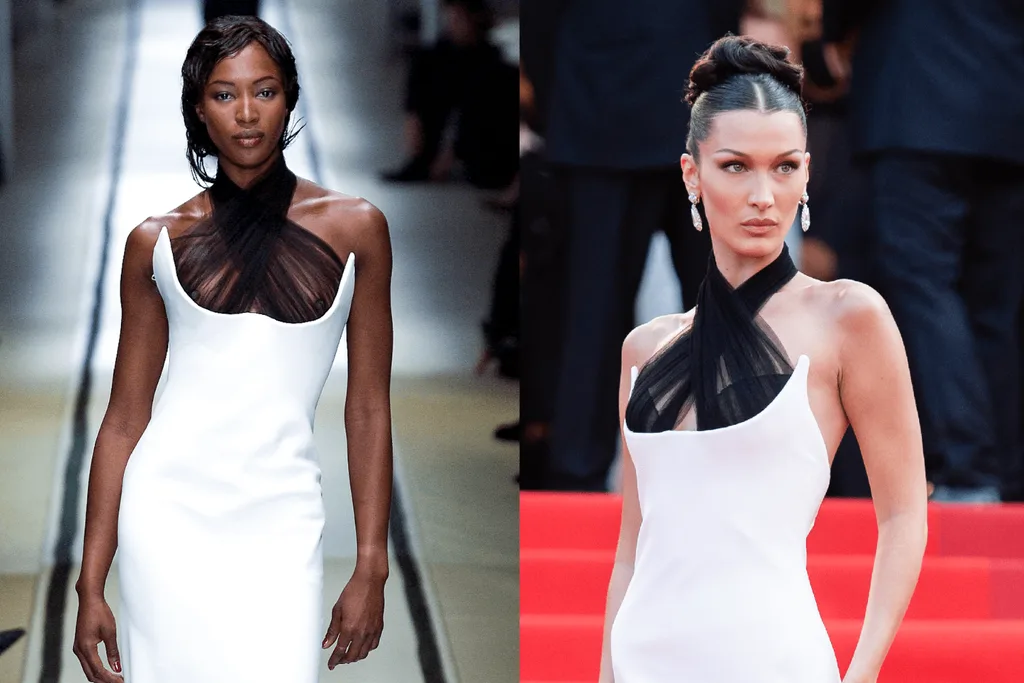
Of course preloved fashion is nothing new. Before the Industrial Revolution, most of humanity dressed in second-hand garments, and charity shops and flea markets continue to hold an important place for good old-fashioned bargain-hunting. But now, slick digital spaces, carefully curated collections and sophisticated authentication processes that eBay could only dream of are expanding and reshaping the market. This is the new business of old clothes. In a dingy office block in Sydney’s Chinatown, hidden between a pharmacy and barber and up a rickety old elevator, lies a sartorialist’s wonderland.
Vivid Pucci prints mingle with teeny Prada miniskirts; Vivienne Westwood corsets brush up against Burberry jumpers; and creations by Kenzo and Comme des Garçons hang alongside sweet little Moschino tops. “My babies,” says Ari Kiko De Bono, as she lovingly runs her fingers along a rack.
The 25-year-old began selling her clothes for extra pocket money when she was a teenager and soon saw a gap in the market for sourcing and reselling designer vintage goods.
“I specialise in pieces from the ’90s to 2007,” says De Bono, pulling out a fabulous pink puffer jacket emblazoned with a Christian Dior monogram.
“But logo mania can only take you so far. The intricacy of high-end clothing – what it’s made of, what it feels like and how it fits your body – is what I’m drawn to.”
Her digital store, Kiko Vintage, originally operated through Depop, but today she runs her own website accompanied by an Instagram account for brand-building, plus the studio where stylists can pull looks for shoots and events. De Bono collects and curates her eclectic luxury offering from consignment stores and individual sellers across Europe – she travelled regularly for buying trips pre-Covid – then releases one hotly anticipated online drop each month.
“Most of my pieces sell within 12 minutes,” she says shyly, bringing welcome new meaning to the term fast fashion. “The great thing about [working in vintage] is that you escape the idea that fashion is bad or wasteful, because you’re part of a corner that is attempting to counter
that,” says the self-described environmentalist.
“I look back and wish I’d known how to thrift when I was in high school, rather than going to Westfield and purchasing five pieces of Supré every week with my friends … When I started buying vintage I realised that investing in something that lasts – and enjoying it – is such a gratifying feeling.”
De Bono, who studies political science part-time while managing her burgeoning business, approaches fashion with a mix of pragmatism, thoughtfulness and wonder.
“I don’t feel connected to history in a lot of ways,” she says. “But the idea that something has been around for longer than me and belonged to somebody before me … there’s something beautiful and magical about that passage.”
Sometimes that passage of time is a matter of months rather than decades, with a crop of consignment stores now specialising in fashion that’s not quite new, but not very old. Jenna Isaacman and Bianca Picherit founded Trading in Style in 2018 to prove that preloved fashion can be polished and put-together.
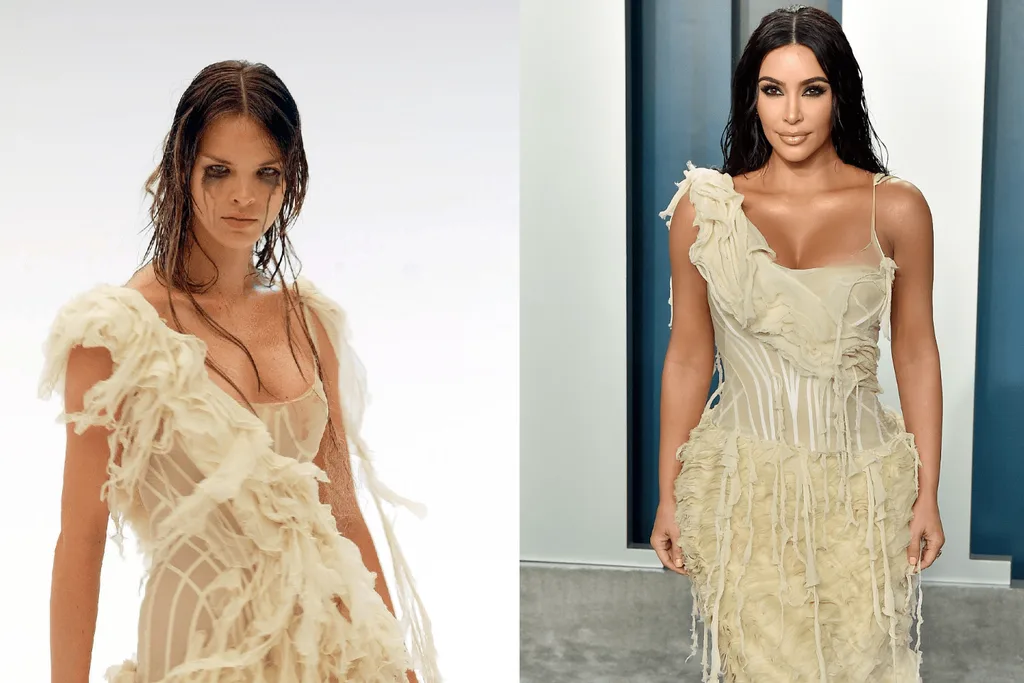
Their catalogue of seriously covetable cast-offs, accumulated from a loyal community of sellers, brims with Australian designers – Aje, Lee Mathews and Scanlan Theodore – and accessories by Gucci, Chanel and Bottega Veneta thrown in for good measure.
“Some of our customers may have missed out on a beautiful Zimmermann dress that sold out last season, but now they get another chance of buying it this season,” says Isaacman. “Price is a big thing too.
People are realising that they can buy a piece that’s been worn once, it’s in perfect condition, but it’s two-thirds or half the price of buying new.”
Contemporary resale also scores points for inclusivity. While traditional vintage is often limited to teeny-tiny sizes, this new phase of fashion is for everyone. And it’s easy, too. Drop off your mid-to-high-end pieces at Trading in Style’s bricksand- mortar store in Randwick, Sydney, and they’ll sell them for you, taking a commission proportionate to the resale price. “Our customers come in with a big suitcase of clothes, and those sales can fund their next season’s wardrobe,” explains Picherit. “It’s a new way of shopping, really.”
Similarly, Australian label KitX invites customers to return preworn designs by the brand to their boutique, where they restore and resell them – then reimburse you with a KitX voucher.
It’s a do-good, feel-good circular model, but thrift shopping can also be exhilarating and fun, especially in this digital age. Trading in Style runs daily virtual shopping sessions via Instagram stories, where Isaacman and Picherit, both impeccably stylish, model and talk through the store’s latest looks. Everything is for sale, and the first person to reply “SOLD” scores the piece. “We usually have 10,000 people watching,” says Isaacman. “Items that are hot will sell within a matter of minutes.”
I learn that the hard way later that day, when I tune into the session and comment “SOLD” on a creamy Camilla and Marc trench. It takes me seven minutes to take the plunge, which is apparently six minutes too many. Buoyed by adrenaline and hungry for a win, I go again, this time swiftly commenting on and then securing a Balenciaga City bag. It’s a reissue of the 2001 Motorcycle bag, a soft, slouchy leather It-tote designed by Nicolas Ghesquière.
I remember desperately wanting one in 2004, when it was tucked tightly into the elbow crook of every cool girl’s arm: Kate Moss; Rachel Bilson; the Olsen twins. The purchase is thrilling – it’s more spontaneous than I’m accustomed to, but the bag embodies the nostalgic appeal of vintage fashion.
Carrying it will transport me to the halcyon days of the early noughties, when all you needed was a Von Dutch trucker cap and a swipe of Juicy Tubes lip gloss to take on the world. A warmer, simpler time, in memory at least. Of course if I change my mind, I know I can always resell the bag, releasing it back into the fashion universe for a second, no third, cycle of life. And then this story starts all over again.
This story originally appeared in the May issue of marie claire Australia.
